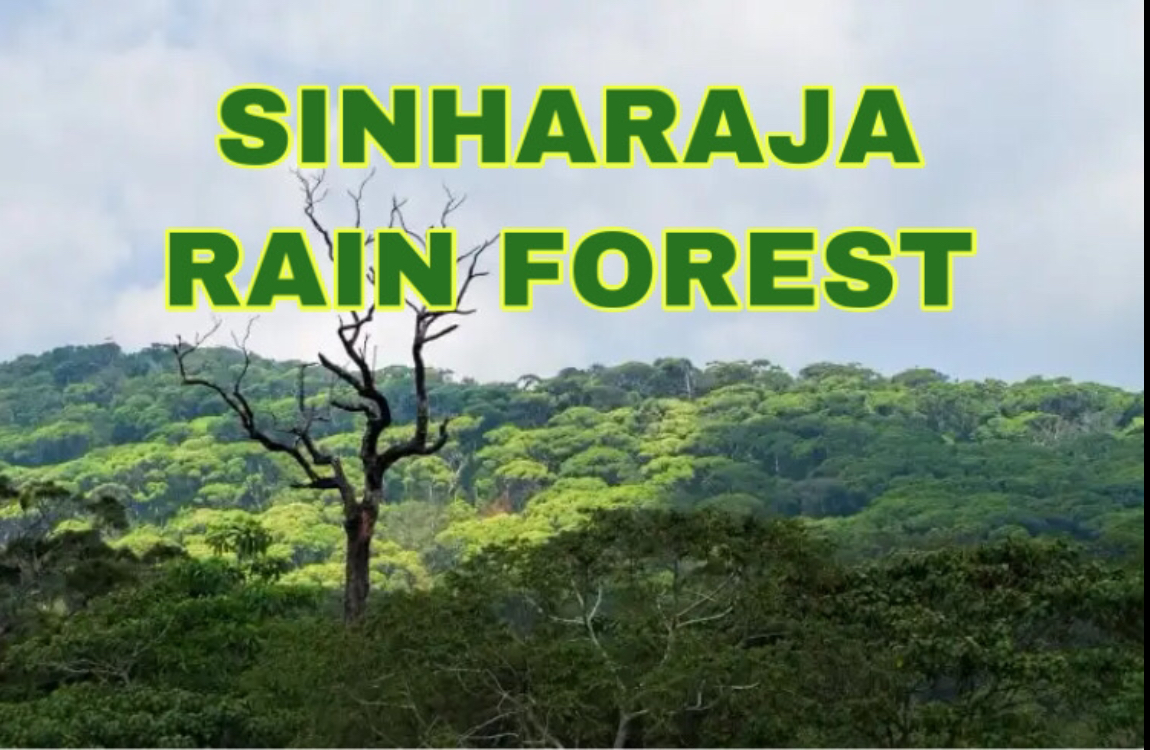The Center for Environmental Justice today filed a writ petition in the Court of Appeal seeking an interim order suspending any intended construction of reservoirs and roads and clearing of the state forest lands in the Sinharaja Forest Reserve.
The Center for Environmental Justice (CEJ) and its Executive Director Hemantha Withanage filed this petition naming Conservator General of Forests, Central Environmental Authority, Minister of Environment, Minister of Wild Life and Forest Conservation, Minister of Irrigation and Attorney General as respondents.
The petitioners state that over the past 15 years, the promotion of low-country tea cultivation and the opening of new roads have set in motion dramatic changes in the Sinharaja forest reserve and its buffer zone. Settlers have flooded into the area and population pressure has increased. They said the high-profit margin of tea has improved living standards, but it has also provided a tremendous incentive for the clearing of natural rainforest.
The Petitioners further stated that recently it was reported in the media regarding an alleged plan to construct a reservoir covering a landmass of five hectares within the Sinharaja forest. The proposed project would move water from Gin and Nilawala rivers to Giruwapattuwa and will provide water to Tangalle, Beliatte, Weeraketiya, Walasmulla, Dambarella and other areas.
The petitioners state that construction of reservoirs at Madugate and Kotapola and construction of two tunnels Madugeta to Kotapola and Kotapola to Ampanagala and Neluwa–Lankagama road Lankagama–Deniyaya road will negatively affect the biodiversity of the already fragile ecosystem while violating the existing laws.
Petitioners state that it was reported on or around August 2020 that certain parties had commenced construction and expansion of an 18 km gravel road from Neluwa to Deniyaya running through the Sinharaja Forest Reserve and the buffer zone. Accordingly, an 8-foot wide road that spans 18 kilometres will be widened to 15 feet and will be developed through the intended development project. Moreover, it has been identified that 1,320 meters of this road go through the land that falls within the Sinharaja Forest Reserve and through several subsidiaries of the Gin Ganga.
The Petitioners state that they have learnt that the construction involves heavy machinery, knocking down large trees in the area and surging immense damage over the forest canvass of the Sinharaja forest and its 100-meter Buffer Zone and the expansion making many disturbances to the forest including tree felling, soil cutting and dumping soil onto the slopes resulting in biodiversity loss (wildlife-agro diversity), loss of aesthetic value, landscape degradation, soil contamination, soil erosion, deforestation, loss of vegetation cover and many other negative environmental impacts.
Petitioners state that Sinharaja is a forest reserve and a biodiversity hotspot in Sri Lanka, which is of international significance and has been designated a Biosphere Reserve and World Heritage Site by UNESCO. It is a treasure trove of endemic species, including trees, insects, amphibians, reptiles, birds, and mammals.
Sinharaja is located within Sabaragamuwa and Southern provinces of the South –West lowland wet zone of Sri Lanka.
Sinharaja is bounded by rivers on three sides; on the north by the Napola Dola and Koskulana Ganga, on the South by Maha Dola and Gin Ganga, on the west by Kalukandawa Ela and spans to Galle, Rathnapura and Matara Districts.
There is roughly a100m buffer zone surrounding the forest reserve which protects the more sensitive inner zones.
The Petitioners state that Sinharaja is the country’s last remaining viable area of primary tropical rainforest. More than 60% of the trees are endemic and many of them are considered rare. The reserve is also home to over 50% of Sri Lanka’s endemic species of mammals and butterflies, as well as many kinds of insects, reptiles and rare amphibians. Ninety-five percent (95%) of Sri Lanka’s 20 endemic birds are present in the forest reserve, which is also home to leopards, which is a threaten





